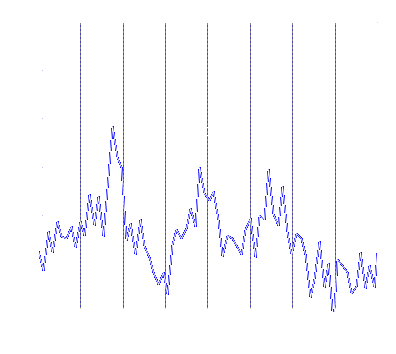Deepsky Object in Autumn
Quasar 3C48 (Triangulum)
| Date & Time: | Oct 18 2014, from 25:34 to 25:41 JST(+0900) |
| Composed 3 images with 3 minutes exposed |
| Optical: | Meade 25cm(10") Schmidt-Cassegrain (f=2500mm, F10.0) |
| Auto-guided with Meade LX200 Equatorial & Pictor 201XT |
| Cooled CCD Camera: | SBIG ST-402ME (Temp.: -20°C) |
| Location: | Ooizumi, Hokuto city, Yamanashi pref. |
| QSO 3C48 / Quasar |
|---|
| R.A. | 01h 37m 41.3s (2000.0) |
|---|
| Dec. | +33°09' 35" (2000.0) |
|---|
| Apparent Size | - |
|---|
| Red shift | 0.367 |
|---|
| Magnitude | 16.5 |
|---|
| Distance | about 4.6 billion light yrs. |
|---|
| Group of Galaxies | - |
|---|
| Other IDs | - |
|---|
|
This page shows you an optical image and a spectrogram of the Quasar 3C48 lying at about 2.5 degrees north of the M33, the Triangulum Galaxy.
The 3C48 with a brightness of about 16.5th magnitude was discovered in 1960,
but its anomalous spectrum could not be explained at that time.
Then the brightest Quasar of 3C273 in Virgo was discovered in 1963 and it was proved that the Quasar has extraordinary large red shifts in its emission lines (observed spectrum).
Consequently, 3C48 was identified as a same kind of deep sky object with 3C273.
In other words, 3C48 is the first discovered Quasar but it's 3C273 identified as a Quasar for the first time.
|
Spectral profile of Quasar 3C48

|

Magnified figure around 6600 to 7000Å
|
| Date & Time: | Nov 15 2014, from 19:50 to 20:21 JST(+0900) |
| Composed 2 images with 30 minutes exposed |
| Optical: | Meade 25cm(10") Schmidt-Cassegrain (f=2500mm, F10.0) |
| with SBIG DSS7 Spectrometer (Slit width: 0.25mm) |
| Auto-guided with Meade LX200 Equatorial & Pictor 201XT |
| Cooled CCD Camera: | SBIG ST-402ME (Temp.: -25°C) |
| Location: | Ooizumi, Hokuto city, Yamanashi pref. |
|
| Emission line | Hβ | O III | O III |
|---|
| Observed WL, λm | 6690Å | 6790Å | 6871Å |
| WL in literature, λ0 | 4861.3Å | 4959Å | 5007Å |
| z | 0.376 | 0.369 | 0.372 |
| Recession velocity, v (km/s) | 9.266×104 | 9.129×104 | 9.195×104 |
| Estimated distance, D | 4.138 bn. lt-yr | 4.076 bn. lt-yr | 4.104 bn. lt-yr |
| (average) | 4.106 bn. lt-yr |
|---|
z= (λm-λ0)/λ0
v= c*((1+z)2-1)/((1+z)2+1)
D= 3.26*v/H0 (million lt-yr)
(c: velocity of light, H0=70 km/s/Mpc)
|
Upper figures show observed spectral profiles of the Quasar 3C48 using an amateur-oriented spectrometer.
An emission line at around 6300Å is derived from the oxygen atoms in atmosphere.
The red shifts of 3C48 have extraordinary large values,
we cannot detect an emission line of Hα in Balmer series (6563Å without Doppler-shift) because the wavelength has been increased in infrared region.
Although it's indistinct, we can detect emission lines of Hβ and two O III's at around 6700 to 6900Å.
A table has listed and indicated the estimated distance to the Quasar from observed wavelengths.
An outrageous value can be calculated as about 4.1 billion light years under an assumption that the Hubble constant H0 has a value of 70 km/s/Mpc.
|



